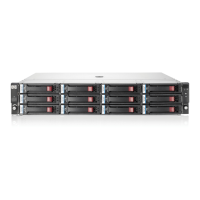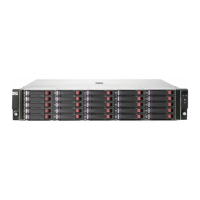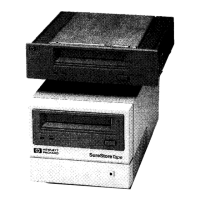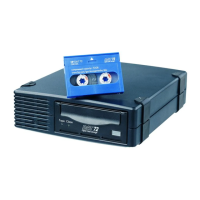



Do you have a question about the HP D2D and is the answer not in the manual?
Provides a general overview of the HP StoreOnce Backup System's purpose and configuration.
Explains how to use NAS targets for backup applications and their features.
Details VTL targets, their emulation types, and usage for backups.
Summarizes key differences between NAS and VTL targets for backup applications.
Describes the primary methods for accessing and configuring the appliance.
Directs users to further resources for detailed information on VTL and NAS devices.
Explains what Virtual Tape Devices are and how they function as backup targets.
Details the various library and drive emulation types supported by the system.
Guides users through the process of creating and configuring VTL devices.
Outlines the practical limitations on the number of VTL devices per host and appliance.
Discusses the flexibility of ESL, EML, and D2DBS emulations for G2 products.
Explains how VTL devices are configured and operate over an Ethernet network.
Describes how to make target libraries visible to backup applications for specific tasks.
Details the configuration and visibility of VTL devices on a Fibre Channel SAN.
Explains supported Fibre Channel topologies for connecting VTL devices.
Describes the importance and implementation of zoning for FC SANs.
Lists the supported interfaces (CIFS and NFS) for NAS shares.
Details which backup applications are compatible with NAS shares.
Specifies the total number of NAS shares that can be configured on an appliance.
Defines limits on files per share and appliance, including deduplication threshold.
States the maximum number of users that can be configured for CIFS share access.
Specifies the maximum number of hosts that can access an NFS share.
Explains the process of data deduplication and its block-level operation.
Details how data deduplication is applied and its benefits within the system.
Provides an example showing space savings with data deduplication.
Introduces replication as a method for synchronizing data between locations.
Describes the Replication Manager software for managing replication environments.
Explains key terms and concepts related to HP StoreOnce replication.
Outlines common strategies for deploying replication, like Active-Passive.
Details the licensing requirements for enabling replication on the system.
Explains the process of seeding initial data to the replication target.
Describes methods for recovering data when a source appliance fails.
Explains the background process of removing deleted or unreferenced data chunks.
Discusses how housekeeping operations can affect overall system performance.
Highlights the significance of housekeeping for maximizing deduplication efficiency.
Provides guidance on configuring rotation schemes and managing housekeeping.
Offers advice on optimizing system performance by managing workloads.
Explains how to balance system performance with deduplication effectiveness.
Lists actions and configurations that should be avoided for optimal performance.
Describes methods for archiving data to physical tape using G1 products.
Specifies the target users for this documentation guide.
Lists other documents providing related information for the product.
Explains the conventions and symbols used throughout the document for clarity.
Details the customer self-repair program for product maintenance.
Guides users on how to register their installed and tested backup system.
Recommends product registration for receiving updates and enhancements.
Provides contact information for submitting comments and suggestions on documentation.












